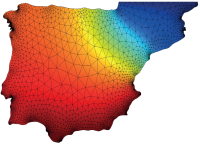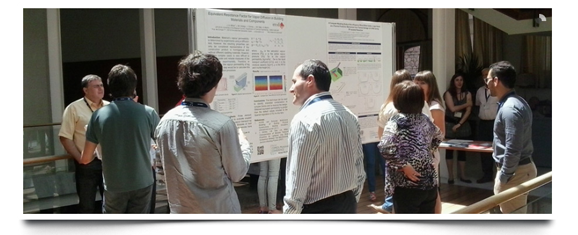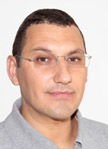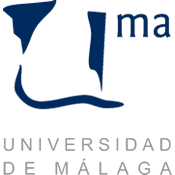II Iberian COMSOL Multiphysics Conference 2015

INTRODUCTION
 The premier Iberian event for Multiphysics Modeling & Simulation. Connect with the Spanish and Portuguese COMSOL Multiphysics users community and participate in training opportunities and events explicitly designed for the academic and engineering community.
The premier Iberian event for Multiphysics Modeling & Simulation. Connect with the Spanish and Portuguese COMSOL Multiphysics users community and participate in training opportunities and events explicitly designed for the academic and engineering community.
The II Iberian COMSOL Multiphysics Conference 2015 will be held in Málaga, Spain, on June 11. The official language of the conference is English. It is co-organized by the University of Málaga, Addlink Software Científico and COMSOL AB.
You’re invited to present your work at the II Iberian COMSOL Multiphysics Conference 2015 on multiphysics modeling and simulation. Oral and poster presentations highlight achievements in multiphysics modeling and simulations using COMSOL. Submission of papers is recommended but not mandatory. Your published work will be recognized by a huge audience.
In addition to the main conference, we have programmed two optional training courses that complements it:
- Wednesday June 10 - COMSOL Multiphysics Course for Beginners.
- Thursday June 11 - II Iberian COMSOL Multiphysics Conference 2015.
- Friday June 12 - COMSOL Multiphysics Advanced Course.
TOPICS
| Group A: Electrical | Group B: Mechanics and Heat | Group C: Fluid and Chemical | Group D: Miscellaneous |
|---|---|---|---|
|
|
|
|
IMPORTANT DAYS
Registration dates:
Early registration
Until May 17th, 2015
Late registration
From May 18th, 2015
Final abstract submission: May 24th - Extended until May 29th
Paper submission and Author registration deadline: June 5th
AGENDA
Morning:
|
9:00 |
Registration opens |
|
9:15 - 9:30 |
Welcome and introduction |
|
9:30 - 10:00 |
Keynote presentation.- Creating and Running Multiphysics Apps Ed Fontes. COMSOL AB, Sweden. |
|
10:00 - 10:45 |
User's presentations. Session 1. |
|
10:45 - 11:15 |
Coffee break |
|
11:15 - 12:15 |
Minicourse.- Application Builder and COMSOL Server. Ed Fontes. COMSOL AB, Sweden. |
|
12:15 - 13:00 |
User's presentations. Session 2. |
|
13:00 – 13:30 |
Keynote presentation.- Electromagnetic Field Simulation in Microwave Ovens: from code to COMSOL Multiphysics. João Pedro Sousa. Teka Portugal S.A., Portugal |
|
13:30 - 15:00 |
Lunch |
Afternoon:
|
15:00 - 16:00 |
Minicourse.- Solving industrial design problems by using COMSOL Multiphysics with MATLAB. Benjamín Ivorra. Complutense University of Madrid, Spain. |
|
15:30 - 16:45 |
User's presentations. Session 3. |
|
16:45 - 17:15 |
Poster session. |
|
17:15 - 17:45 |
Keynote presentation.- Geometry induced biofilm formation . Ana María Carpio Rodríguez. Complutense University of Madrid, Spain. |
|
17:45 - 18:00 |
Conference ends |
|
20:30 |
Conference Cocktail |
Invited speakers
 |
Ed Fontes COMSOL AB, Sweden. Ph.D. in Electrochemical Engineering from the Royal Institute of Technology in Stockholm. Ed Fontes is Chief Technology Officer at COMSOL. He is part of the group that decides the content and plans the work for developing COMSOL Multiphysics, its add-on products, and COMSOL Server. He is also deeply involved in the specification and implementation of the electrochemical engineering functionality in COMSOL. |
| -------------------------------------------------------------------------------------------------------------------------------------- Key Note Presentation.- Creating and Running Multiphysics Apps |
|
|
-------------------------------------------------------------------------------------------------------------------------------------- COMSOL Server is able to host the server processes that drive the apps with the user interface run on a local client, for example an html-client or a desktop client. The combination of the Application Builder and COMSOL Server makes it very straight forwared for modeling experts to develop and share their apps. This prseentation and minicourse demonstrate the use of the Application Builder for developing apps. It shows how you can graphically design user interfaces by dragging and dropping graphic forms and widgets such as menus, input fields, buttons, checkboxes, plot figures, etc. Also the linking of graphics widgets to commands that control the embedded model is demonstrated: for example to control model parameters, mesh, solvers, and results. A demo of the use of COMSOL Server to administrate and run apps gives you a glimpse of the possibilities with this new functionality. |
|
 |
Benjamín Ivorra Complutense University of Madrid, Spain. Ph.D. in Applied Mathematics at the University of Montpellier (France). His main research themes are about optimisation methods and their applications to industrial problems. In particular, he has extensively used COMSOL Multiphysics to model and solve design problems, such as improvement of microfluidic mixers, study of the effect of Pressure/Temperature in food treatment devices or conception of Pulsed Electric Field chambers. |
| -------------------------------------------------------------------------------------------------------------------------------------- Minicourse.- Solving industrial design problems by using COMSOL Multiphyics with MATLAB Abstract COMSOL Multiphysics is a very efficient tool for modeling numerically complex devices. In particular, this software can be used during the industrial design processes involving optimization problems. One interesting characteristic of COMSOL Multiphysics is the possibility of incorporating the created model into a MATLAB script code. This allows the MATLAB script to automatically change some considered model parameters, such as geometrical shapes, physical characteristics, etc. Thus, any optimization algorithm compatible with MATLAB script can solve an optimization problem involving a COMSOL Multiphysics model. During this minicourse, first we will detail the basic steps to create and solve industrial design problems by coupling COMSOL Multiphysics with MATLAB. Then, we will illustrate the presented methodology by considering the optimization of a fast hydrodynamic focusing microfluidic mixer for protein folding. |
|
 |
João Pedro Sousa Teka Portugal S.A., Portugal. Licentiate in Physics Engineering by the University of Aveiro, Portugal. He is Senior R&D Engineer in the Research & Development Department at Teka Portugal S.A. Integrator of COMSOL Multiphysics on microwave ovens research and design. Technical and Scientific Consultant to the GREENWAVE and CURECORK projects (EU funded projects) on computer simulations with COMSOL Multiphysics of electromagnetic fields and heat generation/transfer on ceramics composites and cork agglomerates. He also maintain a strong collaboration with the Physics Department of the University of Aveiro on microwave energy research. |
| -------------------------------------------------------------------------------------------------------------------------------------- Keynote presentation.- Electromagnetic Field Simulation in Microwave Ovens: from code to COMSOL Multiphysics Abstract In a short sentence, designing a microwave oven involves mastering methods that allow the best energy transfer, the maximum energy containment and an optimal load thermal energy distribution. From an experimental point of view these three componentes have to be dealt with an equal importance in order to achieve the best equilibrium possible. Spite the reliability of such methods they have the drawback of being time consuming, any variant in desin equires a full set of analysis to be validated. Computer simulations, using the FTDT mehtod coded in FORTRAN, were first used to compare results of simulated radiation leakage of several designs of a microwave oven's doors against experimental measurements. Simulation and experimental data matched perfectly, and with this the confidence in simulations methods increased. COMSOL Multiphysics was first used in GREENWAVE, a project intended to create industrial hybrid microwave/gas ovens, to simulate the electromagnetic field distribution inside and subsequente heating pattern on ceramic composites. This originated three prototypes with microwave output powers ranging from 6 kW to 20 kW. In the following project, CURECORK, a small prototype of 2kW was created to evaluate the feasibility of microwave energy in the thermal curing process of cork agglomerates under higher pressures. In 2014 Teka Portugal S.A. acquired a COMSOL Multiphysics license to begin simulations on EM fields in microwave ovens, load's heating pattern and leakage through the oven's door. Although this research is at an early beginning, the primary result rouse an interest in the use of COMSOL Multiphysics in CFDs, intended to simulate oven's cooling systems and, more important, cooker hoods air flow pattern in order to achieve better product in terms of fluid dynamic efficiency. |
|
 |
Ana María Carpio Rodríguez Her research interests span upon a wide variety of problems, ranging from applied topics, such as multiscales modeling of bio- and nano-systems, imaging, or the study of defects in graphene, to theoretical and numerical analyses of differential equations. Her recent work on the formation an spread of biofilms in medical and industrial flow systems has made extensive use of COMSOL Multiphysics. |
| -------------------------------------------------------------------------------------------------------------------------------------- Keynote presentation.- Geometry induced biofilm formation Abstract Bacteria in aqueous environments usually gather to form aggregates called biofilms. In biofilms, cells display many behavioural differences from planktonic cells, such as a 1,000-fold increase in tolerance to antibiotics. Hospital-acquired infections are often caused by biofilm spread through medical systems. Design improvements hindering biofilm formation rely on identifying factors that favour their appearance. We will see that the presence of corners and narrowings in medical flow circuits triggers biofilm nucleation by creating secondary vortical motion driving bacteria to walls. Detailed flow studies in micro- and mili-fluidic devices support that observation. Once biofilm seeds are created, they proliferate forming filaments whose structure is again controlled by the geometry. In this work, COMSOL Multiphysics has been extensively used to identify flow structures induced by the geometry that affect the biofilm formation process. |
|
ORGANIZERS
 |
 |
 |
Descripción del evento
| Inicio | 11-06-2015, 9:00 (Europa\Madrid) |
| Clausura | 11-06-2015, 21:00 (Europa\Madrid) |
| Lugar | Universidad de Málaga. Edificio Rectorado |

